When Do Dogs Stop Growing?
All dogs start out as puppies, and they all grow up to be dogs. But when do dogs stop growing? How big can they get? And how do you know when your dog has reached its full size? This post will answer all of those questions and more. So keep reading to learn more about the growth patterns of dogs!
When Do Small Breed Dogs Stop Growing?
Small breed dogs typically reach their full size by around 9-12 months of age. However, some small breeds may continue to grow and fill out until they are 18 months old or even older. So if you have a small breed dog, don’t be surprised if it doesn’t stop growing until it’s a year and a half old or even older.
How Big Do Small Breed Dogs Get?
When Do Dogs Stop Growing with small breeds dog? The size of a small breed dog is typically 12-18 inches at the shoulder and 9-15 pounds in weight. However, there is a lot of variation within the small breed category, so some small breeds may be larger or smaller than this. For example, the Chihuahua is one of the smallest breeds and typically only grows to be about 6-10 inches at the shoulder and 3-6 pounds in weight. On the other hand, the Cocker Spaniel is a larger small breed and typically grows to be about 15-17 inches at the shoulder and 25-30 pounds in weight.
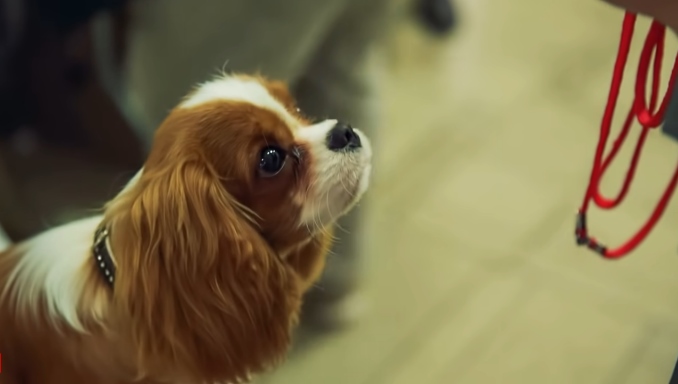
When Do Medium Breed Dogs Stop Growing?
Medium breed dogs typically reach their full size by around 12-18 months of age, they will stop growing by the time they are 18 months old. However, some medium breeds may continue to grow and fill out until they are 24 months old or even older. So if you have a medium breed dog, don’t be surprised if it doesn’t stop growing until it’s two years old or even older.
How Big Do Medium Breed Dogs Get?
The size of a medium breed dog is typically 18-22 inches at the shoulder and 15-50 pounds in weight. However, there is a lot of variation within the medium breed category, so some medium breeds may be larger or smaller than this. For example, the Beagle is a smaller medium breed and typically only grows to be about 13-15 inches at the shoulder and 20-30 pounds in weight. On the other hand, the Labrador Retriever is a larger medium breed and typically grows to be about 21-24 inches at the shoulder and 55-80 pounds in weight.
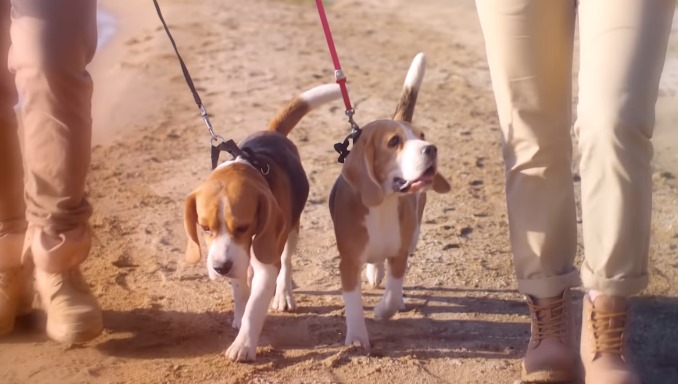
When Do Large Breed Dogs Stop Growing?
Large breed dogs typically reach their full size by around 18-24 months of age. However, some large breeds may continue to grow and fill out until they are 30 months old or even older. So if you have a large breed dog, don’t be surprised if it doesn’t stop growing until it’s three years old or even older.
How Big Do Large Breed Dogs Get?
When Do Dogs Stop Growing with large breed dogs? The size of a large breed dog is typically 22-28 inches at the shoulder and 50-100 pounds in weight. However, there is a lot of variation within the large breed category, so some large breeds may be larger or smaller than this. For example, the German Shepherd is a larger large breed and typically grows to be about 24-26 inches at the shoulder and 75-95 pounds in weight. On the other hand, the Golden Retriever is a smaller large breed and typically grows to be about 21-24 inches at the shoulder and 55-75 pounds in weight.
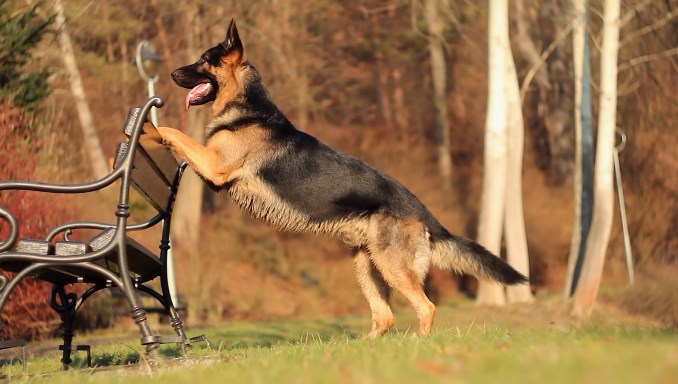
When Do Giant Breed Dogs Stop Growing?
There is no definitive answer for when giant breed dogs stop growing. Giant breed dogs typically take longer to reach their full size than other breeds, and some may continue to grow and fill out until they are 36 months old or even older. So if you have a giant breed dog, don’t be surprised if it doesn’t stop growing until it’s four years old or even older.
How Big Do Giant Breed Dogs Get?
When Do Dogs Stop Growing with giant breeds? The size of a giant breed dog is typically 28 inches or more at the shoulder and 100 pounds or more in weight. However, there is a lot of variation within the giant breed category, so some giant breeds may be larger or smaller than this. For example, the Great Dane is a large giant breed and typically grows to be about 32-34 inches at the shoulder and 120-200 pounds in weight. On the other hand, the Mastiff is a smaller giant breed and typically grows to be about 27-29 inches at the shoulder and 110-130 pounds in weight.
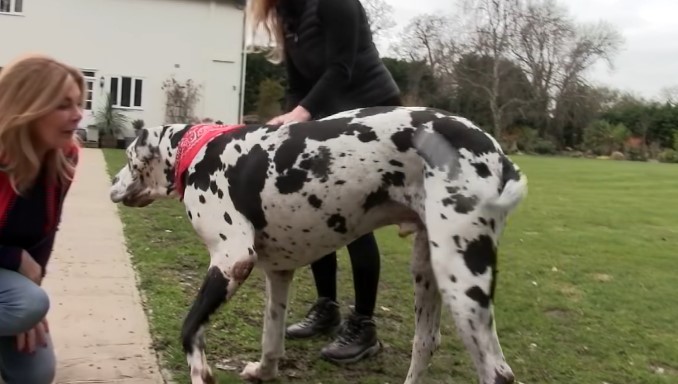
When Do Extra Large Breed Dogs Stop Growing?
There is no definitive answer for when extra large breed dogs stop growing. Extra large breed dogs typically take longer to reach their full size than other breeds, and some may continue to grow and fill out until they are 48 months old or even older. So if you have an extra large breed dog, don’t be surprised if it doesn’t stop growing until it’s four years old or even older.
How Big Do Extra Large Breed Dogs Get?
The size of an extra large breed dog is typically 28 inches or more at the shoulder and 100 pounds or more in weight. However, there is a lot of variation within the extra large breed category, so some extra large breeds may be larger or smaller than this. For example, the Saint Bernard is a large extra large breed and typically grows to be about 30-32 inches at the shoulder and 140-180 pounds in weight. On the other hand, the Newfoundland is a smaller extra large breed and typically grows to be about 28-30 inches at the shoulder and 120-150 pounds in weight.
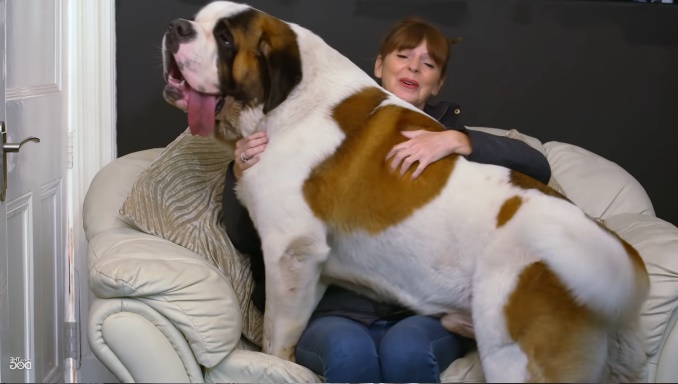
The Bottom Line
So, When Do Dogs Stop Growing? There is a lot of variation in size among different dog breeds. Small breed dogs typically reach their full size by around 12-18 months of age, medium breed dogs typically reach their full size by around 18-24 months of age, large breed dogs typically reach their full size by around 24-30 months of age, and giant breed dogs can take up to 36 months or even longer to reach their full size. There is also a lot of variation in size within each breed category, so some dogs may be larger or smaller than the averages listed above.
If you’re wondering how big your dog will get, the best way to find out is to ask your veterinarian or look up the average size for your dog’s breed. Keep in mind that even within a breed there is variation in size, so your dog may be larger or smaller than the average.
Monitoring Your Dog’s Growth
Now you already know When Do Dogs Stop Growing, If you’re concerned about your dog’s growth, it’s a good idea to keep track of its weight and height. You can do this by taking measurements regularly and recording them in a journal or on a chart.
It’s also a good idea to take your dog to the vet for regular checkups. The vet can check to make sure that your dog is growing at a healthy rate and identify any potential problems.
Some owners like to take pictures of their dogs as they grow. This can be a fun way to document your dog’s growth and see the changes over time.
How to Measure Your Dog’s Height
To measure your dog’s height, use a tape measure or ruler. Place the tape measure at the shoulder and then measure down to the ground. Alternatively, you can place the ruler on the ground and then measure up to the shoulder.If you’re not sure how to do this, ask your veterinarian or a professional dog trainer for help.
How to Measure Your Dog’s Weight
To weigh your dog, you will need to use a scale. You can use a human bathroom scale, but it’s best to use a pet scale if possible. Place the scale on a firm, level surface and then place your dog on the scale. Make sure that your dog is standing still and not moving around.
You can also take your dog to the veterinarian to have it weighed. The vet will be able to give you an accurate weight for your dog.
Factors That Can Affect A Dog’s Growth Rate Include:
Some factors that can affect a dog’s growth rate include the dog’s breed, diet, activity level, rate of metabolism, and health. The age of the dog can also affect its growth rate.
- The dog’s breed: Some breeds of dogs grow faster than others. For example, Great Danes typically grow faster than Chihuahuas.
- The dog’s diet: A diet that is high in calories and protein can help a dog to grow more quickly.
- The dog’s activity level: A dog that is very active may burn off some of the calories that it consumes, which can slow down its growth.
- The dog’s rate of metabolism: A faster metabolism can lead to a higher growth rate.
- The dog’s health: Dogs that are healthy tend to grow more quickly than those that are not. Health problems can slow down a dog’s growth.
Puppies typically grow the fastest during their first few months of life. After that, their growth rates begin to slow down. Most dogs reach their full adult size by about 18 months of age. However, some dogs may continue to grow until they are 2 years old or even older. When Do Dogs Stop Growing with other factor affects?
The size of a dog’s parents can also give some indication of how large the dog will grow. Dogs that come from larger breeds tend to be bigger than those that come from smaller breeds. However, there are always exceptions to this rule.
Dogs that are well-fed and well-cared-for tend to grow to their full potential. Dogs that are malnourished or have health problems may not grow as large as they otherwise could.
It’s important to note that a dog’s growth rate can be affected by many different factors. Some of these factors are within the owner’s control, while others are not. Therefore, it is not always possible to predict exactly how large a dog will grow. However, knowing about the various factors that can affect a dog’s growth rate can help owners to make informed decisions about their pet’s care.
The Breed Of Dog:
The breed of dog will affect When Do Dogs Stop Growing:
Some Small Breed: Chihuahuas, Yorkshire terriers, Pomeranians, toy poodles
Medium Breed: Cocker Spaniel, Beagle, Boston Terrier, Cavalier King Charles Spaniel
Large Breed: Labrador Retriever, Golden Retriever, German Shepherd, Bullmastiff
Extra Large Breed: Saint Bernard, Mastiff, Great Dane, Newfoundland
Giant: Irish Wolfhound, Scottish Deerhound, Great Pyrenees, Komondor
The Right Diet:
A good quality, well-balanced diet is important for all dogs, but it is especially important for growing puppies. A diet that is too high in calories can lead to obesity, while a diet that is too low in calories can stunt a puppy’s growth. Puppies also need more protein than adult dogs. This is because protein is essential for the development of muscles, bones, and other tissues. Diet will affect When Do Dogs Stop Growing:
Puppies should be fed several small meals each day, rather than one large meal. This helps to prevent them from becoming overweight. Puppies should also have access to fresh water at all times.
The amount of food that a puppy needs will depend on its breed, age, activity level, and metabolism. Puppies that are very active or have a fast metabolism may need more food than those that are less active or have a slower metabolism.
Puppies should be fed a diet that is specifically designed for growing dogs. This type of diet is usually higher in calories and protein than an adult dog food. Puppies should be transitioned to an adult dog food when they reach about 9-12 months of age.
How Much Exercise:
Puppies need a moderate amount of exercise. Too much exercise can be detrimental to a puppy’s health, while too little exercise can lead to obesity. Exercise will affect When Do Dogs Stop Growing:
Puppies should be taken on several short walks each day. As they get older, they can gradually increase the amount of time they spend exercising. Puppies should also have plenty of opportunities to play.
Puppies should not be allowed to run or jump excessively until they are at least 18 months of age. This is because their bones and joints are still developing and excessive exercise can cause damage.
When to Spay or Neuter:
Spaying or neutering a dog can affect its growth rate. Dogs that are spayed or neutered tend to grow slightly less than those that are not. This is because the removal of the sex hormones (testosterone in males and estrogen in females) slows down the growth process.
Spaying or neutering a dog does not usually affect its adult size, but it can affect its body shape. Dogs that are spayed or neutered tend to have less muscle mass and a lower activity level than those that are not.
Dogs should not be spayed or neutered until they are at least 6 months of age. This is because the sex hormones are needed for proper development. Spaying or neutering a dog before 6 months of age can cause health problems later in life.
The Right Amount of Sleep:
Sleep is important for all dogs, but it is especially important for growing puppies. Puppies need a lot of sleep because their bodies are growing and developing.
Puppies should be given a quiet place to sleep that is free from noise and distractions. They should also be provided with a comfortable bed or mat. Puppies should be allowed to sleep for at least 8 hours each day.
As puppies get older, they will need less sleep. Adult dogs usually only need about 6-8 hours of sleep each day.
Puppies should not be allowed to sleep for more than 12 hours at a time. This is because they need to be awake and active in order to grow properly.
When to See the Vet:
Puppies should see a vet within the first few weeks of life. This is because they are at a higher risk of developing health problems than adult dogs.
Puppies should be seen by a vet at least once every 3 months. This is because they need to be vaccinated and dewormed regularly. Puppies should also be checked for any signs of illness or injury.
Puppies should see a vet immediately if they show any signs of illness or injury. These signs include vomiting, diarrhea, coughing, wheezing, and difficulty breathing.
Puppies should also see a vet if they are not growing at a normal rate. This can be caused by a number of different health problems.
A Final Word on Puppy Care
Puppies are cute and lovable, but they require a lot of care. Puppies should be fed a healthy diet, given moderate exercise, and allowed to sleep for at least 8 hours each day. They should also be seen by a vet regularly.
Puppyhood is a crucial time in a dog’s life, so it is important to make sure they are getting everything they need. With the right care, your puppy will grow into a healthy and happy dog.
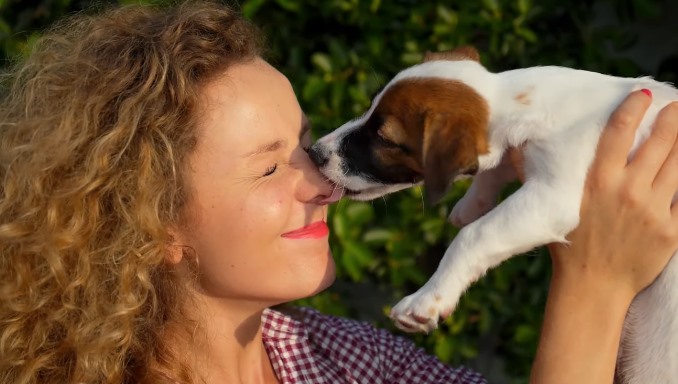
When Do Dogs Stop Growing? – Some Popular Dog Breed
When Do Rottweilers Stop Growing?
Rottweilers are a large breed of dog, and they can take up to two years to reach their full adult size. Most Rottweilers will stop growing by the age of 18 months, though they may fill out and add weight until they are two years old. Fully grown Rottweilers typically weigh between 80 and 135 pounds.
When Do Bulldogs Stop Growing?
Bulldogs stop growing at around 18 months of age. However, they may continue to fill out and add weight until they are about two years old. full-grown adult Bulldogs typically weigh between 50 and 55 pounds. Some may be larger or smaller than this, but this is the average size range.
When Do English Bulldogs Stop Growing?
Most English Bulldogs will be fully grown by the time they are 18 months old. However, some may continue to fill out and bulk up until they are 2 years old. So, while your Bulldog may not get any taller after 18 months, he or she may still add some weight and muscle during the second year of life.
When Do Springer Spaniels Stop Growing?
Springer spaniels are medium-sized dogs that are known for their friendly dispositions and boundless energy. They make great family pets and are relatively easy to train. But like all dogs, they do eventually stop growing – so when do springer spaniels reach their full size?
Most springer spaniels will stop growing by the time they are one year old, although some may continue to fill out and gain weight until they are 18 months old. Fully grown adults usually weigh between 30 and 50 pounds and stand at around 18 inches tall at the shoulder.
Despite their relatively small size, springer spaniels are considered a medium-sized breed. This is because they are sturdily built, with muscular legs and a broad chest. They have a thick, weather-resistant coat that can be either wavy or curly, and comes in black, white, liver or blue roan.
If you’re thinking of adding a springer spaniel to your family, you’ll be glad to know that they are generally healthy dogs with a lifespan of 12-14 years. They do require regular exercise and plenty of mental stimulation, so they are not the best choice for first-time dog owners or those with a very active lifestyle. But if you can provide them with the love and attention they need, you’re sure to have a loyal and loving friend for many years to come.
When do Cocker Spaniels Stop Growing?
Cocker Spaniels stop growing at around one year of age. However, they may continue to fill out and mature until they are two years old. full-grown adult weight. Some may even grow a little bit larger than their expected adult size. Cocker Spaniels are considered small to medium-sized dogs. They typically weigh between 18 and 30 pounds and stand 14 to 16 inches tall at the shoulder.
Cocker Spaniels are relatively active dogs, especially when compared to other small breeds. They need a moderate amount of exercise to stay healthy and happy. A daily walk or play session should be sufficient for most Cockers. However, some may require more vigorous exercise, such as running or hiking, to burn off excess energy. Cockers are also bred in two different types: field-bred and show-bred. Field-bred Cockers are typically higher energy and more athletic, while show-bred Cockers are usually calmer and less active.
If you’re thinking about adding a Cocker Spaniel to your family, be sure to do your research and choose a reputable breeder. Cockers are generally healthy dogs, but like all breeds, they are prone to certain health conditions. Be sure to ask the breeder about the health history of the parents and grandparents of the puppy you’re interested in. And remember, no matter what breed of dog you choose, be prepared to provide plenty of love, attention, and exercise.
When Do Shiba Inus Stop Growing?
Shiba Inus typically stop growing by the time they are one year old. However, they may continue to fill out and add muscle mass until they are 18 months to two years old. Some Shiba Inus may even grow and fill out until they are three years old. So, if you’re wondering when do Shiba Inus stop growing, the answer is that it varies from dog to dog. But generally speaking, they will reach their full adult size by the time they are two years old.
When Do Jack Russells stop Growing?
Most Jack Russells will stop growing by the time they are one year old. However, some may continue to grow until they are 18 months old. Once they reach adulthood, they will generally remain the same size.
When Do Mini Aussies Stop Growing?
Most mini aussies will stop growing by the time they are one year old. However, some may continue to grow until they are two years old. Miniature australian shepherds typically weigh between 20 and 30 pounds fully grown.
When Do Mini Dachshunds Stop growing?
Most Mini Dachshunds will stop growing by the time they are one year old. However, some may continue to grow until they are two years old. If your Mini Dachshund is still growing after one year, you should consult your veterinarian to make sure there are no health concerns. Generally speaking, though, most Mini Dachshunds reach their full adult size by the time they are one year old. So, if you’re wondering when do Mini Dachshunds stop growing, the answer is typically around one year of age. However, every dog is different, so some may stop growing sooner while others may take a bit longer to reach their full adult size. If you have any concerns about your dog’s growth, be sure to consult your veterinarian.
When Do Whippets Stop Growing?
Full-grown whippets typically weigh between 25 and 40 pounds. Most Whippets will be fully grown by the time they are 18 months old but they can keep growing until they’re about two years old. So if you’ve got a young whippet, don’t be surprised if he or she keeps getting bigger!
When Do Vizslas Stop growing?
Vizslas typically stop growing by the time they reach one year of age. However, they may continue to fill out and bulk up until they are 18 months old. Therefore, it is generally recommended that owners wait until their dog is at least 18 months old before having them spayed or neutered.
When Do Weimaraners Stop Growing?
Weimaraners are a medium-sized breed of dog, typically weighing between 60 and 70 pounds. They are considered full-grown at around 18 months of age. However, they may continue to fill out and add some muscle mass until they are 2 years old. Some Weimaraners may even grow slightly larger than their expected adult size. But in general, most Weimaraners will reach their full adult height and weight by 18 months old. So if you’re wondering when do Weimaraners stop growing, the answer is typically around 18 months of age. However, some may continue to fill out until they are 2 years old.
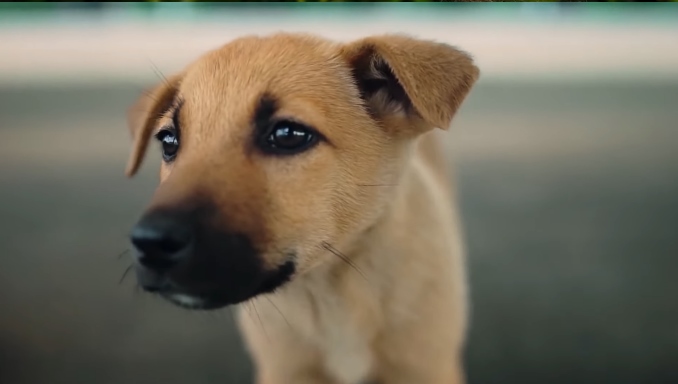
FAQs about When Do Dogs Stop Growing
Why Do Dogs Grow So Fast?
Dogs grow so fast because they are born with a lot of undeveloped cells. When these cells divide, the puppy grows larger. Puppies typically have a growth spurt between 4 and 8 weeks old, when their bodies double or even triple in size! After this initial growth spurt, puppies will continue to grow at a slower but steady pace until they reach adulthood.
What is the Largest Dog Breed?
The largest dog breed is the English Mastiff. These massive dogs can weigh up to 250 pounds and stand as tall as 36 inches at the shoulder! However, not all Mastiffs are this large. The average weight of a Mastiff is around 175 pounds.
What is the Smallest Dog Breed?
The smallest dog breed is the Chihuahua. These tiny dogs typically weigh between 2 and 6 pounds and stand between 5 and 8 inches tall at the shoulder. However, some Chihuahuas may be even smaller than this. The world’s smallest Chihuahua on record weighed just 1 pound and was only 3.8 inches tall at the shoulder!
How Long do Puppies Stay Small?
Puppies typically stay small until they are around 6 to 8 months old. However, some may continue to grow and fill out until they are 12 months old or even older. So if you’ve got a young puppy, don’t be surprised if he or she keeps getting bigger!
How Long Do Dogs Live?
The average lifespan of a dog is around 10 to 12 years. However, some breeds may live much longer than this. For example, the Toy Poodle has an average lifespan of 14 to 18 years, while the Giant Schnauzer can live for up to 16 years. Meanwhile, the miniature schnauzer typically only lives for 10 to 12 years.
How Can I Tell How Big My Dog Will Get?
If you’re wondering how big your dog will get, there are a few things you can look at. First, take a look at your dog’s parents. If they are both large dogs, chances are your dog will be large as well. You can also look at your dog’s breed. Some breeds, like the Great Dane, are known for being large, while other breeds, like the Chihuahua, are known for being small. Finally, you can ask your veterinarian for their opinion on how big your dog is likely to get.
How much do dogs grow after 6 months?
Most adult dogs will have reached their full height by 6 months of age, although they may continue to fill out in body mass and muscle tone until 18-24 months. The breed of the dog is an important factor when predicting how large a dog will be at maturity. On average, small breeds such as Chihuahuas or Miniature Poodles will reach their adult size by 6 months, while large breeds such as Mastiffs or Great Danes may not reach full maturity until 18-24 months.
However, there are exceptions to every rule and some dogs can take longer to reach their final height than others of the same breed. Pet owners need to understand that, regardless of a dog’s breed, the amount of nutrition and exercise it receives will affect its eventual size. Proper nutrition and adequate exercise are key in helping dogs grow to their full potential.
Conclusion
Dogs reach their full size at around one year of age, but some larger breeds may take up to two years. Puppies grow quickly in the first few months and then slow down as they near adulthood. You can expect your dog to be fully grown by one year of age, although some large breeds may take up to two years.
By keeping an eye on your pup’s growth and consulting with your veterinarian if you have any concerns, you can ensure that your furry friend is growing healthy and strong.
Above is the article “When do dogs stop growing?“. Thanks for reading!









Reading your article helped me a lot and I agree with you. But I still have some doubts, can you clarify for me? I’ll keep an eye out for your answers.